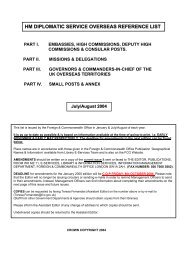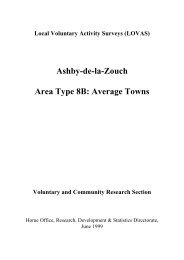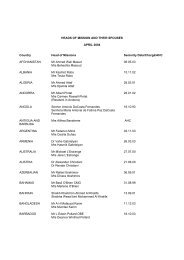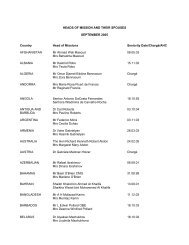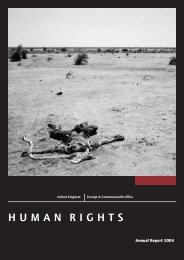A detailed guide to State Pensions for advisers and others
A detailed guide to State Pensions for advisers and others
A detailed guide to State Pensions for advisers and others
You also want an ePaper? Increase the reach of your titles
YUMPU automatically turns print PDFs into web optimized ePapers that Google loves.
12<br />
What contributions count <strong>to</strong>wards <strong>State</strong> Pension?<br />
We will include Class 1, 2 or 3 National Insurance contributions paid, credited, or<br />
treated as paid when we work out <strong>State</strong> Pension. However, a minimum number of<br />
contributions is needed <strong>to</strong> qualify <strong>for</strong> a <strong>State</strong> Pension. See pages 15-16 <strong>for</strong> details<br />
of these rules. Basic <strong>State</strong> Pension is paid at a full rate when the contribution<br />
conditions are met in full, or otherwise at a reduced rate (subject <strong>to</strong> the minimum<br />
conditions being satisfied). National Insurance contributions are payments <strong>to</strong> the<br />
National Insurance Fund.<br />
[SSCBA 1992 sections 5-9 <strong>and</strong> 11-14]<br />
If a person earns less than the Primary Threshold (currently £105 a week <strong>for</strong><br />
2008/09), but at or above what is called the Lower Earnings Limit (currently £90 a<br />
week <strong>for</strong> 2008/09), they will be treated as if they had paid contributions, although<br />
no contributions will actually be paid.<br />
If a person is self-employed they will have <strong>to</strong> pay Class 2 National Insurance<br />
contributions unless HM Revenue & Cus<strong>to</strong>ms (HMRC) have given them what is<br />
called a Small Earnings Exemption. People with this exemption may choose <strong>to</strong> pay<br />
Class 2 contributions. Class 2 contributions are paid at a flat rate (currently £2.30<br />
a week <strong>for</strong> 2008/09). They may also have <strong>to</strong> pay Class 4 contributions which<br />
HMRC normally collect with their income tax. Class 4 contributions do not count<br />
<strong>for</strong> benefit purposes.<br />
If a person does not work, or if they earn below the Lower Earnings Limit either some,<br />
or all, of the time, they may choose <strong>to</strong> pay Class 3 voluntary National Insurance<br />
contributions. Class 3 contributions currently cost £8.10 a week <strong>for</strong> 2008/09.<br />
What is meant by ‘enough contributions’?<br />
A person has <strong>to</strong> have paid, been treated as having paid or been credited with<br />
enough National Insurance contributions on their earnings in a given tax year <strong>for</strong> it<br />
<strong>to</strong> count as a qualifying year.<br />
[SSCBA 1992 section 122 (1)]<br />
What counts as earnings <strong>for</strong> basic <strong>State</strong> Pension?<br />
Earnings on which Class 1 <strong>and</strong> Class 2 contributions have been paid, <strong>and</strong> Class 3<br />
contributions, will count <strong>to</strong>wards <strong>State</strong> Pension. Earnings on which full rate Class 1<br />
contributions have been paid or are treated as having been paid count as<br />
qualifying earnings.<br />
Earnings on which Class 1 contributions have been paid or treated as paid (up <strong>to</strong> the<br />
Upper Earnings Limit (UEL) of £770 a week in 2008/09) <strong>and</strong> Class 2 <strong>and</strong> Class 3<br />
contributions count <strong>to</strong>wards <strong>State</strong> Pension. Each Class 2 or 3 contribution counts as<br />
one week's earnings at the Lower Earnings Limit. For 2008/09 this means that if a<br />
person paid 20 Class 2 contributions, they would count as earnings of 20 x £90,<br />
<strong>and</strong> this would count as earnings of £1,800.




